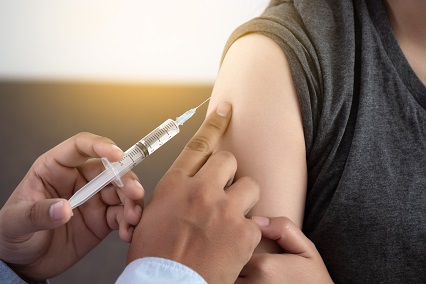
Winter 2020-21
Vaccinophobia in The Times of Covid-19: Current Status and Future Direction
Rowida Mohamed, MSc✉ and Yves Paul Mbous, MEng✉; Health Decision Making SIG

Vaccinophobia has been a potential threat to the accomplishments of vaccination programs in the US over the past decades. Currently, the pressures to accelerate the development of COVID-19 vaccines have raised concerns about adequate safety and effectiveness testing, but also highlighted perceptions of the vaccines as “experimental.” 1 In a recent survey, half of the respondents preferred to delay vaccination, whereas 20% claimed that they would refuse altogether to vaccinate either themselves or their children against COVID 19. 2 These results suggest a low vaccination acceptability status-quo, impeding an adequate vaccination rate required for achieving herd immunity against this virus when the vaccine become available. Meanwhile, the dominant messages, such as stay-at-home and shelter-in-place to help curb the spread of COVID-19, have led to a notable decrease in immunization services uptake. For example, childhood immunization rates have dropped by 73% since the beginning of the pandemic.3 Now, as social distancing requirements are gradually relaxed, the US could experience outbreaks of vaccine-preventable diseases if routine vaccinations are not re-initiated.
Shifting the minds of those hesitant to get vaccinated is challenging. It requires in-depth knowledge of the target population and long-term investment in multifaceted interventions. To understand vaccination decision-making behaviors, The WHO recommends using the “COM‑B model” (Capability, Opportunity, Motivation—Behavior).4 According to this model, vaccine decision-making is influenced by personal-level factors (capability and motivation), and environmental-level factors (opportunity). In the dearth of robust evidence to guide COVID19 vaccine interventions, the “COM‑B model” can be used to generate ideas as to where research should be directed. Future research should aim to better disseminate knowledge on the benefits of vaccines in order to enhance individuals’ capabilities. First, routine vaccines from influenza to measles provide partial protection against COVID-19, suggesting the significance of maintaining routine immunization during the pandemic to benefit from their spillover effect.5 Second, a growing body of evidence shows that COVID-19 pathogenesis expands beyond the lungs to impact the cardiovascular system; more than three-quarters of surviving COVID-19 patients suffered from heart muscle complications.6 Informing the public that vaccine efficacy is not limited to preventing infection but can also mitigate the severity of the disease is essential. It is also crucial to revise the lessons learned from the success of earlier immunization programs to motivate people to get vaccinated. For example, during the influenza pandemic in 20009, the H1N1 vaccine demonstrated high effectiveness and safety despite the widespread skeptical perceptions, at the time, due to its relatively rapid development. 7 Additionally, reassuring those who may be hesitant to go for vaccination visits about the safety of the vaccine delivery systems might improve access to immunization services. Finally, vaccinating is a prosocial act. In other words, people get vaccinated to benefit others rather than themselves. It, therefore, seems valuable to assess the interplay between the vaccination decision factors and the inclination for prosocial vaccination.
The success of any vaccination program depends on the proportion of the population that gets vaccinated. Unless social and behavioral researchers develop and evaluate interventions supporting vaccine decision-making soon, subsequent vaccination campaigns will be insufficient to achieve adequate vaccine coverage, which is necessary to curtail the infection and to allow a return to routine social activities.
References
- Lurie N, Saville M, Hatchett R, Halton J. Developing covid-19 vaccines at pandemic speed. N Engl J Med. 2020;382(21):1969-1973. doi:10.1056/NEJMp2005630
- CBS News Eye on Trends: The latest from the Election & Survey Unit. https://www.cbsnews.com/live-news/cbsnews-eye-on-trends/. Accessed August 25, 2020.
- Santoli JM, Lindley MC, DeSilva MB, et al. Effects of the COVID-19 Pandemic on Routine Pediatric Vaccine Ordering and Administration — United States, 2020. MMWR Morb Mortal Wkly Rep 69. 2020. doi:10.15585/mmwr.mm6919e2
- WHO/Europe | Publications - TIP Tailoring Immunization Programmes (2019). https://www.euro.who.int/en/publications/abstracts/tip-tailoring-immunization-programmes-2019. Accessed August 25, 2020.
- Salman S, Salem ML. Routine childhood immunization may protect against COVID-19. Med Hypotheses. 2020;140:109689. doi:10.1016/j.mehy.2020.109689
- Puntmann VO, Carerj ML, Wieters I, et al. Outcomes of Cardiovascular Magnetic Resonance Imaging in Patients Recently Recovered from Coronavirus Disease 2019 (COVID-19). JAMA Cardiol. 2020. doi:10.1001/jamacardio.2020.3557
- Lansbury LE, Smith S, Beyer W, et al. Effectiveness of 2009 pandemic influenza A(H1N1) vaccines: A systematic review and meta-analysis. Vaccine. 2017;35(16):1996-2006. doi:10.1016/j.vaccine.2017.02.059